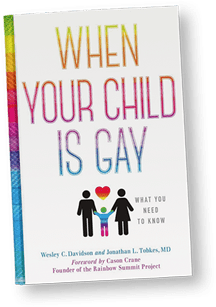For a person having a bisexual orientation, the orientation is not chosen even though the sex of the partner may be. The annual Bisexual Awareness Week ( September 16-23, 2019), co-sponsored by GLSEN, celebrates bisexuals who make up more than 50% of the LGBT community. The Williams Institute, a policy think tank for LGBT policy in California, estimates that there are nearly 25.6 million Americans and nearly 11% acknowledge same-sex attraction.
What does this mean for straight parents? How do you respond to a child who comes out as bisexual? You should know that:
- Bisexuality is different from sexual fluidity. Bisexual is a sexual orientation that refers to being interested in people of one’s own gender and people of other genders. Sexually fluid people often feel that their attraction is situated and shifts due to particular partners, their environment, and the time in their lives.
- According to his ongoing studies in gay, lesbian, and bisexual research. Cornell University psychologist Rich Savin-Williams, Ph.D., author of Mostly Straight: Sexual Fluidity Among Men ( Harvard University Press: 2017), your son or daughter may try out different orientations before one feels more comfortable.”
- The 2015 National Youth Risk Behavior Survey of U.S. High School Students found that in the student risk behavior behavior it examined (planning and attempting suicide), bisexual students reported the highest risk.
- Bisexuals face intense bullying and harassment and report poorer mental health outcomes than GL or straight youth.
- Over a third of bisexuals reported not disclosing their sexual orientation to any medical provider.
- Young bisexual and gay males have disproportionately high rates of HIV, Syphilis, and other STDS.
- Adolescent bisexual and lesbian females are more likely to have ever been pregnant than their heterosexual peers.
- The Centers for Disease Control and Prevention found that 30% of students who had sexual contact with both sexes, experienced dating violence more than heterosexual and gay students.
- Compared to their straight counterparts, bisexuals have disproportionate levels of substance abuse, suicide, and eating disorders. Bisexual women have 46% of being raped as opposed to 17% of straight women and 13% of lesbians.
With all these harrowing statistics pointing to discrimination against bisexuals, straight parents do NOT need to respond to their bi child by uttering any of the following remarks:
- “It’s only a phase!”
- “You don’t know what you want! Get off the fence and decide whether you’re gay, lesbian or straight!” Society gives them a bum rap and may regard them as “half-queer.” Some lesbians think they are sleeping with “the enemy.”
- “You’re just being promiscuous! Sex with males and females!”
Do respond as you would with a gay, lesbian, transgender child.
- Show unconditional love.
- Love your child even if you don’t love the sexuality.
- Don’t sexualize your LGBT kids. They may not be having sex, but just feel they are attracted to both sexes. If they are having sex, be sure they are practicing safe sex!
- Don’t pray that your child will choose one identity. You will be disappointed.
- Talk about protection from STIs. It will help your child make healthy choices. Also discuss consent of sexual relationships.
- Provide contacts (such as PFLAG) for your child of the same age who have similar experiences.
- There are many organizations that are aimed specifically at bisexual youth such as the Boston bisexual resource center.

When Your Child Is Gay: What You Need To Know
For more detailed advice, see book, co-authored with a mother of a gay son and a psychiatrist, Jonathan L. Tobkes, M.D.